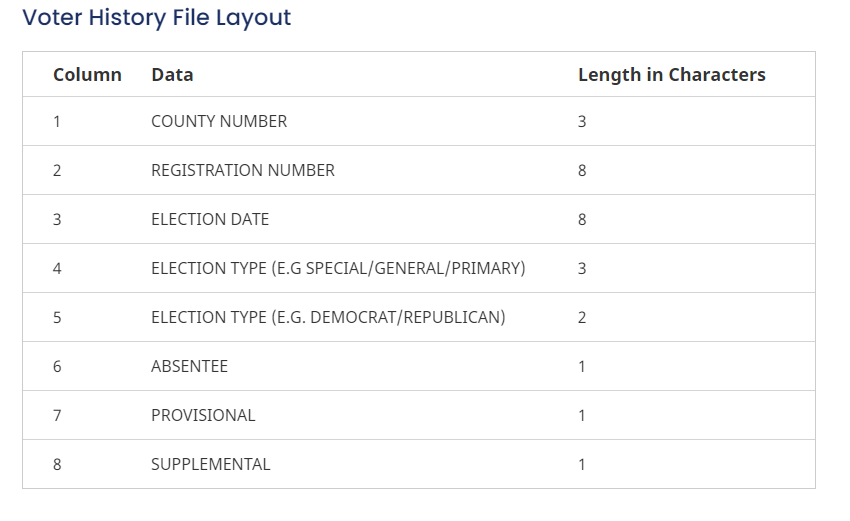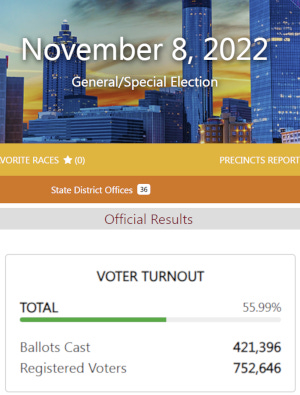My cohorts and I have uncovered an alarming problem with Georgia's election records
There is an innocuous explanation that doesn't involve election fraud, but it shows us why citizens need to scrutinize public records.
Georgia has been blessed with a Secretary of State that publishes election records online. It’s just a shame that these public records contain false and misleading information.
For instance, the Voter History File (VHF) is a list of voters that voted in a particular election. It doesn’t contain personally identifiable information such as names or addresses, but it lists a voter’s unique registration number, along with the date of the election that the voter voted in, and his or her vote method.

There are pernicious problems lurking within that dataset.
Take, for example, Fulton County’s general election on November 8th, 2022. There were exactly 421,396 ballots cast, according to the official results.

However, in sharp contrast to that 400,000 number, we would only count 113,437 ballots in Fulton County if we counted them with the single-date Voter History File.

That’s a 73% difference between 2 official sources!
It gets worse. Did you notice how I referred to the Voter History File as the “single-date Voter History File”? That’s because you can download the annualized VHF, which contains data on every election conducted in 2022. The annualized VHFs are essentially a conglomeration of all the single-date VHFs in 2022.

If you download the annualized VHF, and filter out every election in 2022 except for the one on November 8th, 2022, you should theoretically end up with a copy of the November 8th single-date VHF. You should count 113,437 voters credited with casting a ballot.
In reality, the annualized Voter History File shows 533,255 credited voters in Fulton County in that election.
That’s a 27% increase from the official results, and a 370% increase from the single-date VHF!
In addition, the annualized VHF shows 113,408 registration numbers that are credited with voting twice! There are also 7 registration numbers that are credited with voting 3 times!
To summarize, there are 3 different sources giving us 3 wildly different turnout rates for Fulton County’s 2022 general election. One of those sources claims that over 100,000 people voted more than once!
There are similar oddities found across all the counties in Georgia and in every election.

A good analyst would dig deeper into the data try to figure out what is going on. The Voter History files include columns indicating whether or not a given voter - represented by a single row in the spreadsheet- voted absentee, voted with a provisional ballot, or voted with a supplemental ballot. “Absentee” means voting by mail or in-person before election day; voting “provisionally” means filling out special/emergency ballots that are sealed until an election worker verifies that the voter’s ballot can legally count; “supplemental” voters are just a 3rd category of voters that relate to obscure technicalities with how elections are run.

What the granular data shows is that the annualized VHFs contain twice as many non-absentee voters as the single-date VHFs, and that the single-date VHFs completely omit absentee voters. The single-date VHFs only count in-person, election day voters; the annualized VHFs count both absentee and non-absentee voters. Also, the annualized VHFs double-count in-person, election-day voters, which explains why there were over 100,000 voters that were credited more than once.
If you subtract the number of voters in the single-date VHFs from the number of voters in the annualized VHFs, you would end up with a much closer approximation to the official results.
Through some clever mixing-and-matching, we can get quite close to the official results. Rather than proving election fraud, this is indicative of a bug inside the Georgia Secretary of State’s computers. Hopefully the Secretary of State can fix these errors, and prevent similar ones in the future.



